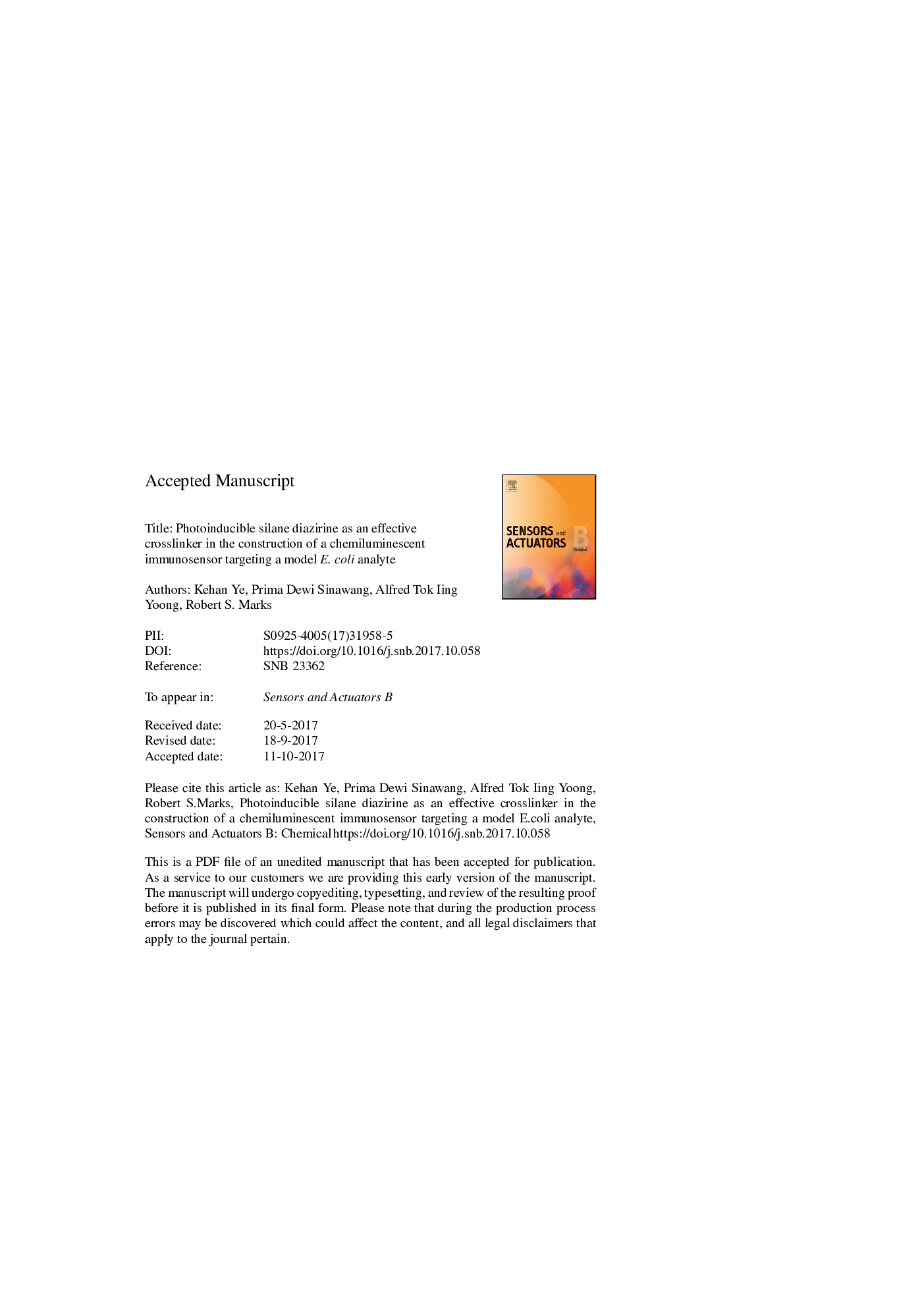| Article ID | Journal | Published Year | Pages | File Type |
|---|---|---|---|---|
| 7141382 | Sensors and Actuators B: Chemical | 2018 | 35 Pages |
Abstract
One of the greatest challenges that define the performance of a fibre optic biosensor (FOBS) is the immobilization of the bio-receptor molecules onto the surface of fibre optic. In this study, a photoinducible silane diazirine was developed as an effective crosslinker in the construction of a chemiluminescent immunosensor targeting a model E. coli analyte. After optimization, it has shown superior adaptability over traditional chemiluminescent ELISA and a commonly used glutaraldehyde chemical immobilization method in detection limit (6.44 * 102 CFU/ml) and dynamic range (6.44 *105 to 6.44 *108 CFU/ml, r2Â =Â 0.98; 6.44 *102 to 6.44 *105, r2Â =Â 0.92). The newly developed immobilization method has enhanced the function of FOBS as an affordable and dispatchable tool in the early warning monitoring of the putative presence of E. coli cells. It can be used either in individual sample screening or in continuous monitoring of the environment to indicate the need for further investigation. The diazirine crosslinking method can also be adopted in the immobilization of other protein-based bioentities thus expanding its real-world utility.
Keywords
Related Topics
Physical Sciences and Engineering
Chemistry
Analytical Chemistry
Authors
Kehan Ye, Prima Dewi Sinawang, Alfred Iing Yoong Tok, Robert S. Marks,
